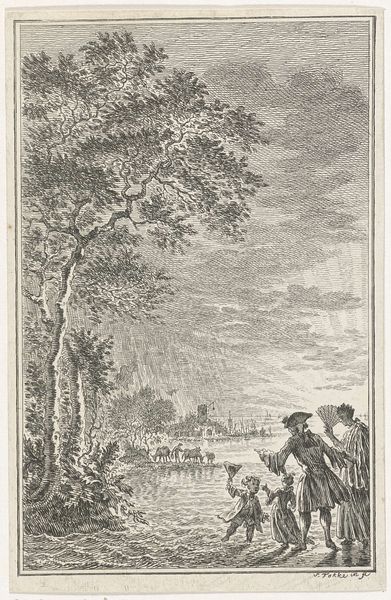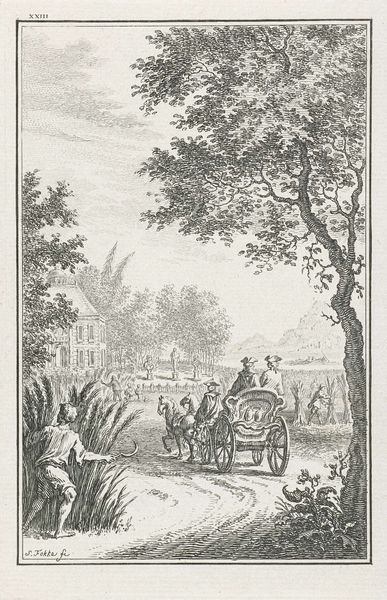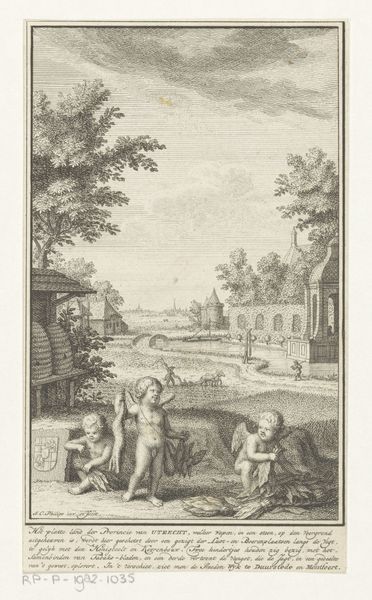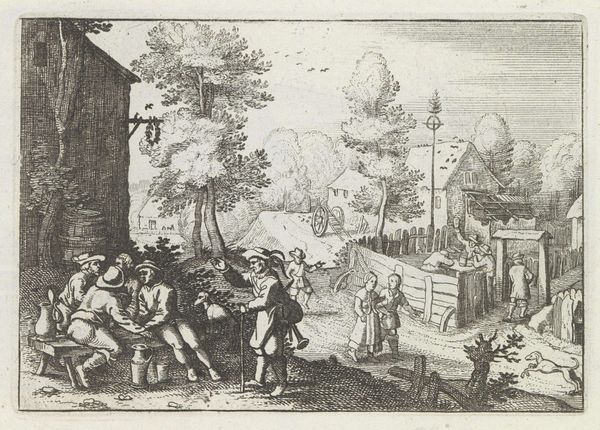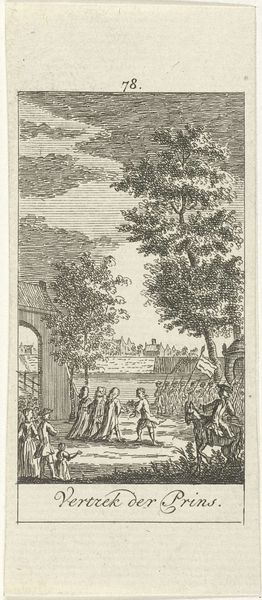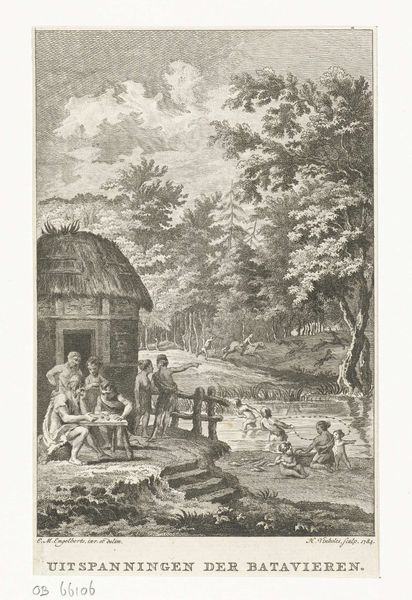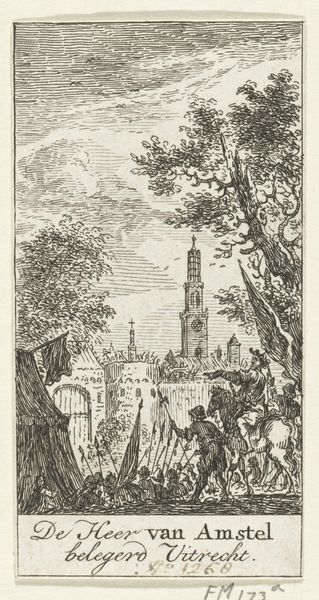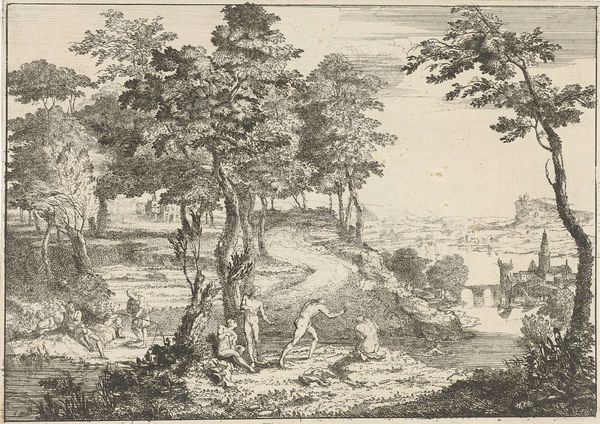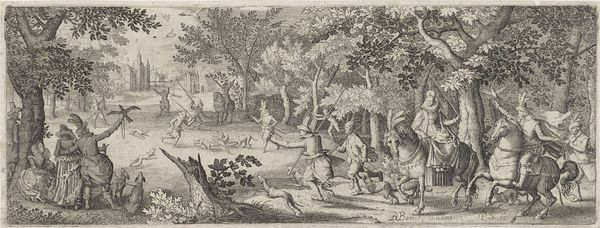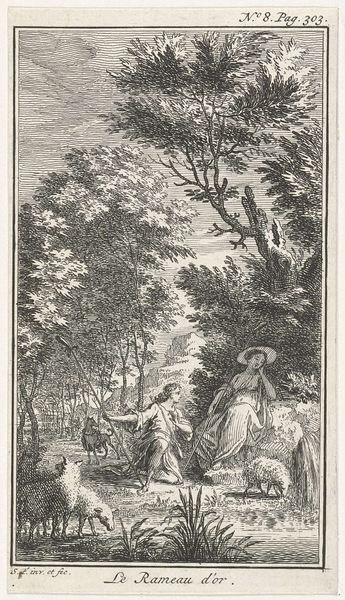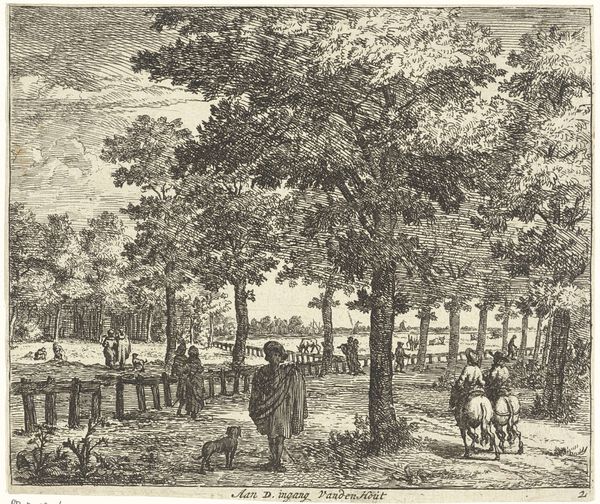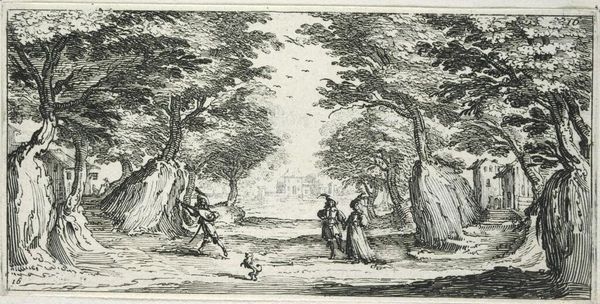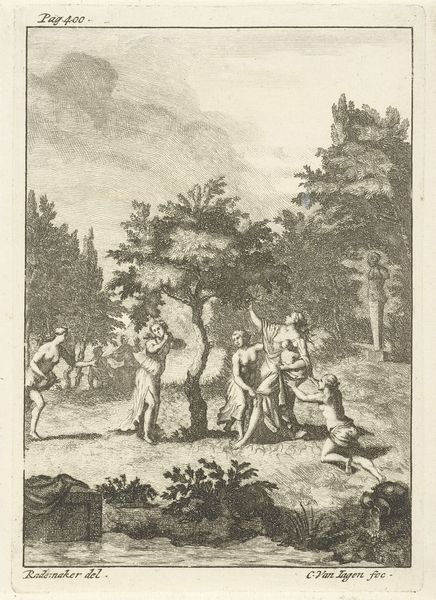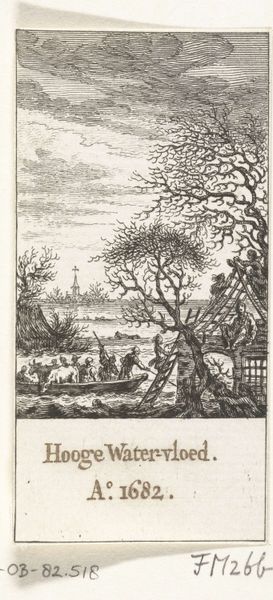
drawing, print, ink, pen, engraving
#
pen and ink
#
drawing
#
baroque
# print
#
landscape
#
figuration
#
ink
#
pen
#
genre-painting
#
engraving
Dimensions: height 100 mm, width 51 mm
Copyright: Rijks Museum: Open Domain
Jan Caspar Philips made this etching, entitled "Augustus: hooioogst," sometime between 1700 and 1775. The printmaking process is an indirect one: the artist would have used a sharp needle to draw an image into a coated metal plate, which was then submerged in acid. This would bite away the exposed lines, which then hold ink. The plate is then pressed onto paper, transferring the image. The etched lines capture a scene of labor: the harvesting of wheat, combined with leisure. We see laborers at work in the fields, and children bathing in a stream. There's a striking contrast between the wheat harvest, connoting hard work, and the carefree abandon of the youth. The text below the image reinforces this contrast, highlighting both "pleasure" and "gain." The print is a reminder that all images are made by human hands, even those that depict mechanized or agricultural labor. This connects the work to broader issues of labor, class, and the relationship between work and leisure in 18th century society. It asks us to consider the value of both work and play.
Comments
No comments
Be the first to comment and join the conversation on the ultimate creative platform.
